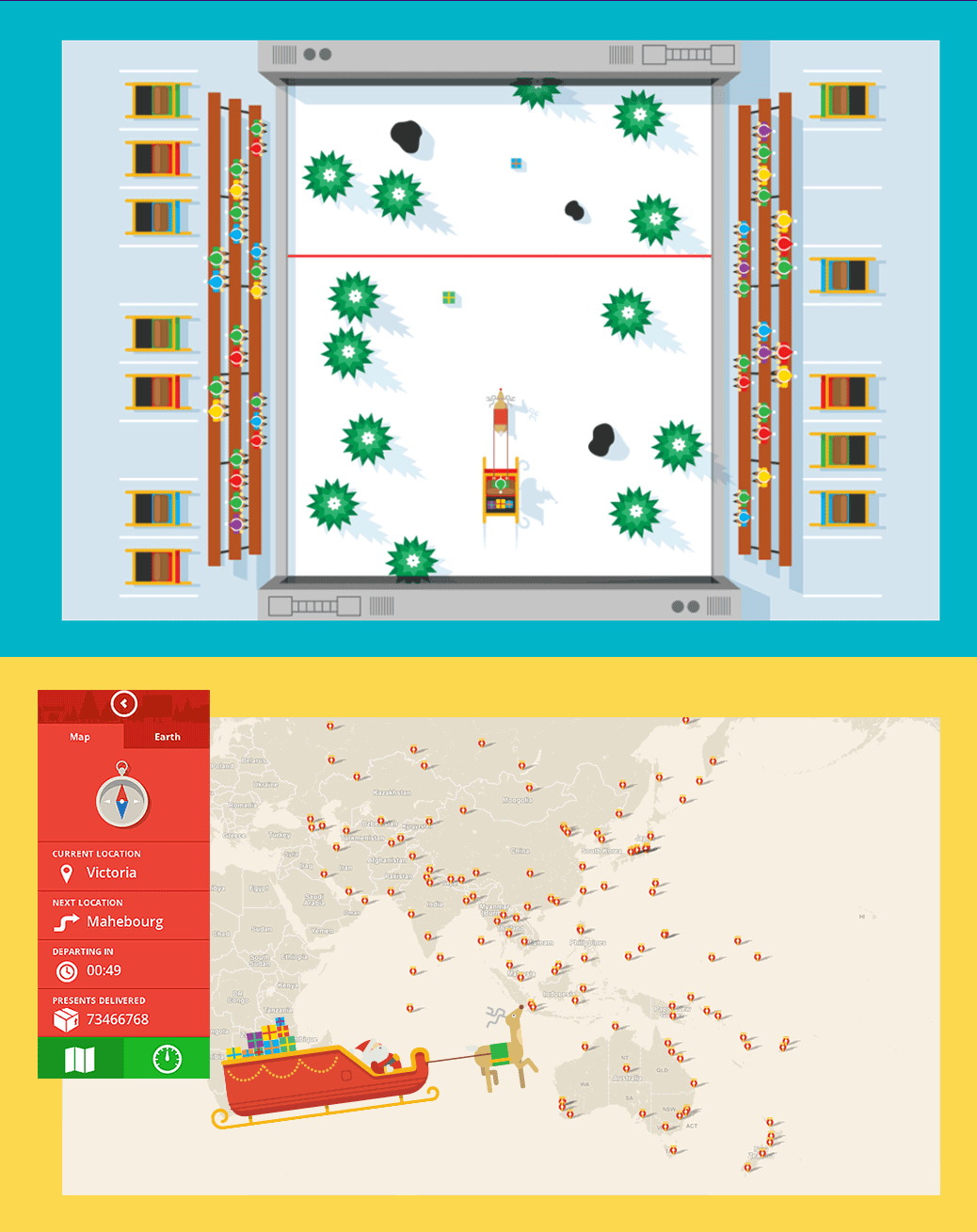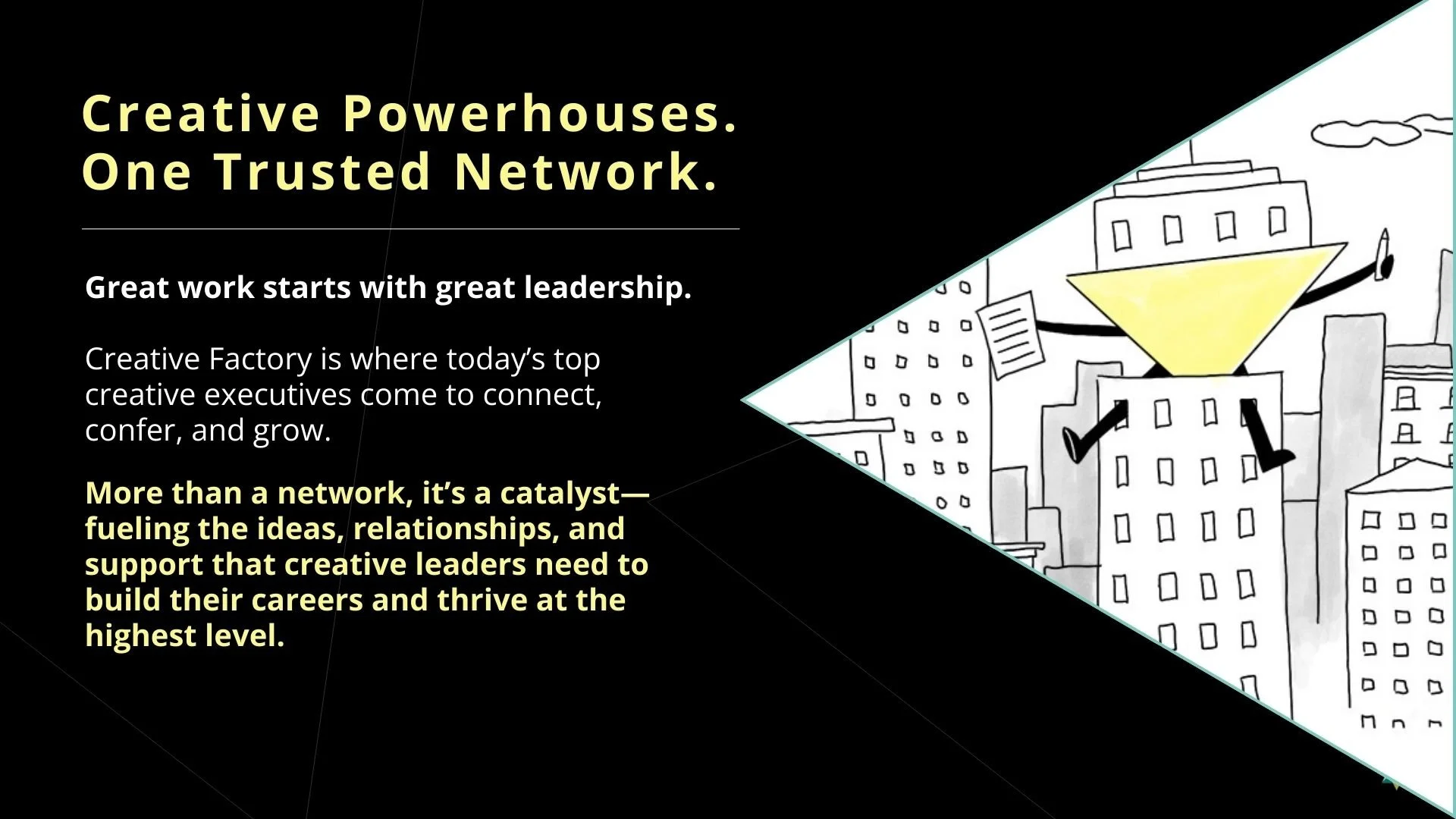
What It Took to Design the First Google Santa Tracker
Halli Thorleifsson, on the project that changed his life.
/ DECEMBER 02, 2020
/ FIRST-PERSON
Before Halli Thorleifsson founded Ueno and built it into a 100-person creative agency with offices in San Francisco, New York, Iceland, and Los Angeles--and clients like The New York Times, Red Bull, and Slack--he was a freelancer looking for a big break.
In 2012, everything changed when Google approached an agency he freelanced for to create the first Santa Tracker. Here, in his own words, Halli tells the inside story about how he capitalized on the once-in-a-lifetime opportunity and led a hodge-podge team to design Google’s first Santa Tracker.
Courtesy Halli Thorleifsson
I wasn't in the meeting when Google briefed Upperquad, the agency where I was freelancing for at the time. So the founder of the agency, Phil, briefed us. I was calling in from either Iceland or Tokyo, I can't remember. There were a few other freelance designers on the call.
This was Thursday, and we were briefed to bring some ideas to the table on Monday to create the first Google Santa Tracker. I cleared my weekend, reached out to five illustrators on Dribble, and took the first person who responded because of the crazy timeline. We created a concept and put it together in Flash. I paid the illustrator $1,000 out of my own pocket—it was a lot of money for me at the time.
I don't know if you know the story of the Santa Tracker, but the Santa Tracker started in the 1950s when a young child called into NORAD (North American Aerospace Defense Command) and spoke to a general about the location of Santa. Then NORAD was like, Well, maybe that's a fun thing and they opened these call centers where kids could call in on Christmas and see where Santa was. It became a way to humanize NORAD.
When Google Maps started, NORAD and Google began tracking Santa on Google Maps. NORAD eventually stopped doing it, and Google decided to keep going with it, not just Google Maps, but ‘Let's put a Santa pin on the map and anyone can follow it.’
I didn’t think that a simple Santa tracker was enough. We needed to build excitement and launch something ahead of the main event. l decided to create a village, a bunch of houses that you could scroll through and a new house that comes online every day in the weeks leading up to Christmas. You can go into the house, and it's a different setting each day, like an Advent calendar. It creates excitement and kids come every day to check out the latest thing.
That was my idea for the pitch meeting. Everyone else came with rough concepts, and I came with a prototype of this illustrated village with moving parts, sound, and snow.
My idea became the concept straightaway. But the development team we presented it to at Google said it would take six months to build this—Christmas was only two and a half months away. They said it was never going to work, so I found a developer and asked him to build the village for me in a web browser, which we did by the next weekend.
I showed it to the team at Google and said we can do this. I went out and found a few developers in Iceland, mostly. They worked with me for the next few months. There's always a solution. It's the same thing today, I don't really accept a “no” until I get like 10 “no’s.”
During the two and a half months from mid-October to Christmas, I worked 18 hours a day. I negotiated with the freelancers. I was a producer. I was the creative director. I hired all the people and I directed the developers who helped on the launch. We had people working in 10 cities spread across four continents, and we used Google+ Hangouts to communicate.
We were doing stuff we had never done before. I remember saying, “Wouldn't it be fun if we had an animated video?” And we found someone to do it. Then I thought, Wouldn't it be fun if we added special sound that would trigger within the browser? I'd never done that before, but we did it anyways. The features kept piling on and the project kept getting bigger and bigger and bigger.
Nobody said “no” to me, because I didn't show Google anything until it was done. I didn't show them a concept for a game—I showed them a fully-developed game. I did that because I didn’t want to get into iterations. We didn't have the time for that. It was the only way that I could make it work to make the launch. It was wildly irresponsible, but it worked out.
The biggest challenge? Honestly, every single thing was on the razor's edge. Everything was last minute. Our launch strategy became to launch whatever was ready, and then the other things later because we still needed to finish them.
We would work on things up until the minute they launched, then go straight into polishing the thing planned for the next day. The village consisted of three games, a number of interactive scenes, and a special chat where kids could get Santa to make personalized phone calls to friends and family.
Google Santa Tracker. Images courtesy Ueno.
The Santa Tracker launched on Christmas Eve and kids could follow Santa’s flight across the world in real-time. I remember watching Twitter when Google put the Santa Tracker on the home screen of Google.com and I saw a huge response right away. We can’t publicly share the traffic numbers, but they represented a good size of the global population.
My wife, daughter, and I were in Japan at the time and the day after Christmas we went to Hiroshima to see where the bomb dropped. We took the bullet train and after all the hard work and probably partly because Hiroshima is an overwhelming place, I remember coming very close to a full nervous breakdown. The last few months been so intense, and then being there in that place where all these people died, I just broke down.
Right after that I began to think about launching my own company. I thought, I'm pretty sure I can take on any kind of project. Something inside of me clicked that made me confident to go into everything with this attitude of, We can make this happen.
There was really no part of that project that I wasn't involved in or overseeing. I had pulled together a 360-degree project from nothing to concept to launch with the help of a lot of great people. I wanted to do more of that.
From that project, I learned the importance of expanding your comfort zone. Being just that little bit outside the comfort zone is a great place to live.
Join Our Creative Community
Join more than 75 leaders from top organizations, including Spotify, Amazon, Shake Shack, Stripe, NASA, Hilton, Block, Doordash, Roblox, Clay, Paramount, and Mailchimp.
Matt McCue is the co-founder of Creative Factor. He lives in New York City, but is willing to travel long distances for a good meal.




